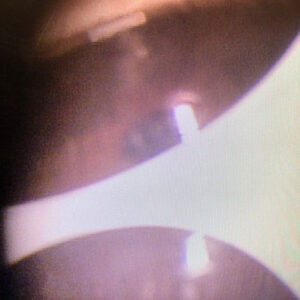Refractive: Back to basics
September 2022
by Ellen Stodola
Editorial Co-Director
Identifying and factoring in corneal aberrations prior to laser vision correction is one of the basics of ensuring a successful refractive procedure. William Trattler, MD, discussed how these aberrations can have an impact and what he does in his practice, using wavefront and topography to help identify them and making sure they are included in the treatment plan.
Every cornea has some type of irregularity, Dr. Trattler said. Some are easy to observe on topography, and some are a little more subtle.
The purpose of wavefront is to look at the optical system to understand the visual pathway and the contributions of various forms of astigmatism that could be impacting vision. For example, he said, if you have three patients who have –3 D of myopia, they could all have different corneal aberrations because of the shape of their cornea or other aspects of the epithelial shape. “We look at various aspects and use different technologies to try to understand the shape of the cornea and wavefront to help deliver the best vision possible to our patients undergoing corneal refractive surgery,” Dr. Trattler said.
Using wavefront is applicable for laser vision correction, not cataract surgery. In cataract surgery, you can’t do wavefront analysis of the whole eye because of the cataract, which has its own aberrations. “We usually perform wavefront aberrometry on patients who are younger and do not have cataracts,” he said.
The software in various lasers can interpret the wavefront aberrations and develop a pattern that not only treats the myopia and astigmatism but also higher order aberrations, Dr. Trattler said. “Surgeons do wavefront-guided laser vision correction because we’re trying to use not only the patient’s prescription but also more information to treat the cornea with the laser.”
Patients who have irregularly shaped corneas may not be candidates for laser vision correction. “We perform screening ahead of time with topography and tomography to evaluate the corneal shape to make sure patients do not have keratoconus or other forms of irregular astigmatism,” Dr. Trattler said. If you look at the wavefront in patients with keratoconus, they have some very characteristic findings. If significant keratoconus is visible on topography, wavefront aberrometry is not helpful. “Wavefront is for cases where someone has smaller levels of irregularity compared to a patient with keratoconus,” he said.
Dr. Trattler further stressed that wavefront is one of many tools used in evaluating patients for laser vision correction, and it’s helpful to use this along with topography to understand a patient’s optical system. Wavefront is looking at the light as it passes through the cornea and through the lens. In a young patient, you assume the lens is normal, so any aberrations would arise from the cornea, which can potentially be corrected during the laser ablation of the cornea. “You also always want to check corneal topography and tomography to make sure that the cornea is healthy and there are no issues,” he said.
For example, epithelial basement membrane dystrophy can be a source of wavefront abnormalities, but hopefully this condition would be picked up on slit lamp exam. Additionally, he stressed that wavefront is only useful for LASIK and PRK procedures, not SMILE, because SMILE does not use wavefront aberrometry to design and deliver treatments.
In his practice, Dr. Trattler uses the VISX platform (Johnson & Johnson Vision). “We have a high-definition wavefront aberrometer called iDESIGN that links with the VISX laser,” he said.
Dr. Trattler said that wavefront evaluations are mostly useful for those doing laser vision correction. The laser treatment takes into consideration all the wavefront aberrations from the measurements to help guide treatments.
It’s also important to make sure you’re optimizing the ocular surface. Dr. Trattler said that any significant dry eye or MGD could throw off wavefront readings, so it important to address the ocular surface ahead of time.
Dr. Trattler uses wavefront-guided treatments in most of his laser vision correction cases, particularly for younger patients. It may be difficult to get a good wavefront capture in patients who are pseudophakic because there may be a reflection off the IOL during the testing, which makes the results less reliable.
About the physician
William Trattler, MD
Center for Excellence in Eye Care
Miami, Florida
Relevant disclosures
Trattler: Alcon, Johnson & Johnson Vision
Contact
Trattler: wtrattler@gmail.com



